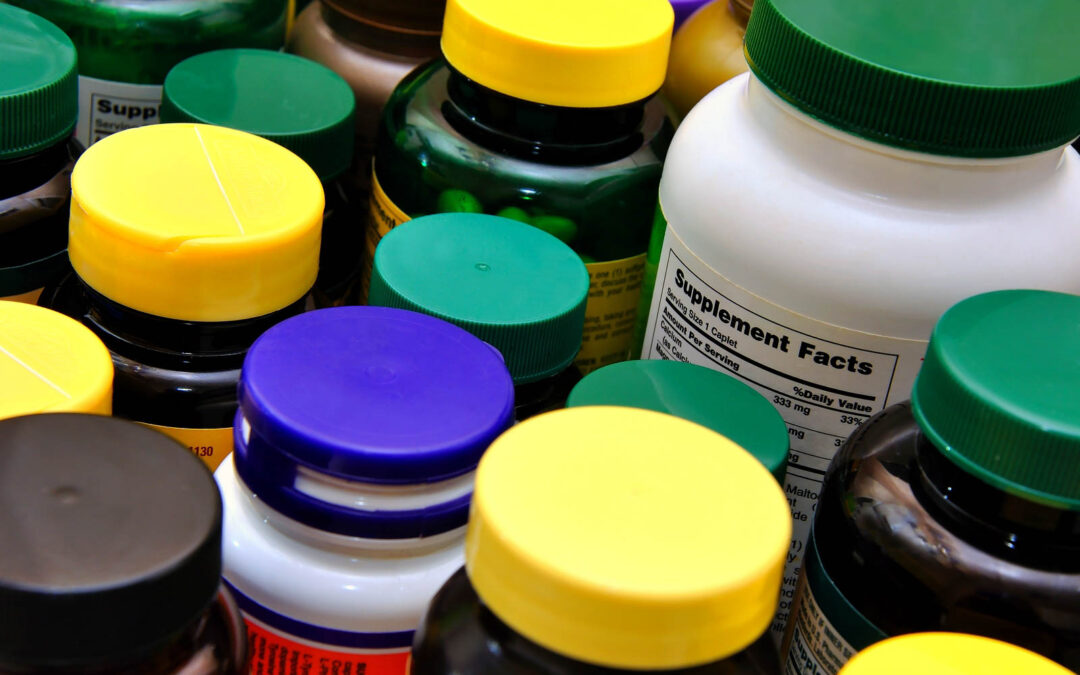To compete in the supplement industry, you need products that last. Learn how processing & packaging methods can improve your product’s quality & shelf life.
The average American diet has been coming up short for a long time. Processed foods and busy lifestyles make it very challenging for people to get the nutrition they need from meals alone. It’s no surprise, then, that we have seen the vitamin and mineral supplements industry make tremendous gains to fill that gap. The market for supplements in North America, which was estimated to be worth $25.1 billion in 2019, is expected to surpass $36 billion by 2025.
In a marketplace as bustling and competitive as this one, quality matters. That quality begins with using the finest ingredients in top-flight facilities, but it continues with effective packaging that preserves the product’s appearance, consistency, and efficacy. Maintaining supplement quality from production to shelf takes meticulous best practices and dependable materials. We’ll show you how.
Deoxygenate Your Supplement’s Packaging
Humans aren’t the only living things that see great nutritional value in your supplements. After you’ve sent your product to the shelves, bacteria, fungi, and other aerobic microorganisms can feast on its contents before your real target market has even had a chance to open up the package.
Fortunately, starving these unwanted customers is easy when you use antimicrobial packaging practices. Nitrogen flushing is one such effective method. Filling the packaging with 99-percent-nitrogen gas removes oxygen by sinking beneath the lighter oxygen molecules and forcing them out of the container. With no oxygen, no oxidation—and that means your supplement will have the efficacy your customers expect.
Keep Moisture at Bay With Desiccants
We all know water is the universal solvent. When it comes to manufacturing and packing supplements, however, water can create more problems than solutions. Unwanted moisture can damage the integrity of protein powders by causing clumping and eventual spoilage. Highly absorbent gelatin coatings on capsules can also swell, stick together, or allow moisture to degrade the potency of the capsules’ contents.
Keep Moisture at Bay
Hydroscopic (water absorbing) products can be particularly sensitive to the moisture in the air. This can be a real problem if the product is not properly protected starting immediately after being manufactured into bulk product such as capsules or tablets, but especially for powders, gummies and granular products.
Immediately after production, these products should be double bagged and boxed or sealed in an air tight drum or pail. Products should always ship on a pallet if possible, to reduce the possibility of breaking a seal during rough shipping conditions.
Once at our facility the products will be carefully inspected and held in a climate-controlled environment to further assist in maintaining product integrity.
Select the Right Packaging Material
Eliminating water and oxygen in the final stages of preparation is critical in maintaining supplement quality from production to shelf—but those measures won’t matter without reliable packaging. When a customer buys your product, you want it to be as effective and attractive as it was when it first rolled off your production line. Foil pouches and sachets make that possible. Foil is a fortified material that will block the ultraviolet radiation that could oxidize and degrade the organic compounds in your supplements, ensuring a long shelf life for your supplements before and after the sale. These foil packets are also terrific candidates for an eye-catching graphic design that will truly make your supplement stand out.
Carving out your place in that ever-growing supplement market isn’t easy. Why do it alone? Partner with IBR Packaging to process, print, and pack your bulk supplement powders. While you concentrate on making your product the best, we’ll concentrate on making it last.
